Description
The Snake Plant Every House Should Have
Sansevieria trifasciata ‘Laurentii’, also known by its common name of snake plant, is a popular houseplant suitable for outdoor and indoor plantings. There are many species of Snake Plants such as the Sansevieria Zeylanica and the Sansevieria Whitney, but this article will focus on the most common species sold in the United States, the Sansevieria Trifasciata.
The name “Trifasciata” refers to the three bands that run up the leaves, giving them a striped appearance. Sansevierias are native to South Africa, where they can grow in various conditions, including full sun and even partial shade. The plant is popular in greenhouses, offices, and homes due to its ability to thrive under almost any indoor lighting condition
Caring for your Sansevieria Trifasciata
Sansevieria trifasciata requires very little care to survive. This hardy plant can tolerate drought, low humidity, and even neglect for months at a time. However, proper drainage is essential, especially if the plant is placed in a saucer or other container that retains water.
Light
In their native habitat, they receive varying degrees of sunlight. Still, as they are popular as indoor plants, full sunlight may be too much for them to handle year-round.
Sansevieria trifasciata can tolerate low levels of light, but it does best in bright indirect sunlight. If placed in a window that receives morning or afternoon sun, the leaves may burn. If you are growing indoors, try to locate it near a window with very little direct sunlight.
Water
Like most succulents, snake plants requires little watering. Watering can be increased during the summer months when it is growing actively. During the winter months, water your Sansevieria less frequently or not at all.
Soil
Sansevieria trifasciata is native to rocky areas of tropical Africa, which have loose, well-drained soil that does not retain water. Although you can use almost any soil for this plant, it will not tolerate soggy soils or being planted in pots that do not drain well.
Fertilizer
Sansevieria require very little fertilizing as they are not heavy feeders. It is recommended that you occasionally use fertilizer during the summer growing season to maintain blooms and healthy foliage, but it is unnecessary.
Suppose you are growing sansevieria in potting soil purchased at a garden center or plant nursery. In that case, there is no need to use fertilizer. However, suppose you are using organic compost to fill your pot. In that case, you may need to add an organic fertilizer every 6-8 weeks during the summer months. Do not use chemical fertilizers, or you will risk burning your plant’s leaves.
Pests, Disease, and Common Issues
Sansevieria trifasciata is prone to few issues that may affect its health or its growth. Snails and slugs are attracted to the succulent flesh of the plant. They can be controlled with a solution of soap and water or simply hand-picking them off the plant.
Aphids and mealybugs are also attracted to this plant due to its succulent leaves. To control them, use an insecticidal soap spray or dust made from neem. Both are natural pesticides that are effective against most pests without risking damage to your plants.
The most common affliction of sansevierias is overwatering. These plants can go months without water, and too much will leave their roots soggy and prone to rotting.
Pruning
Sansevieria has visually attractive foliage, and many collectors enjoy it for its colorful appearance. However, its leaves will not grow back once they have been trimmed. Therefore, it is unnecessary to prune this plant, but it may be pruned for aesthetic reasons if a leaf burns or dies.
Propagating
Sansevieria can be propagated by dividing clumps of upright stems that have developed into individual plants or from leaf cuttings taken in spring or summer. The easiest way to divide a clump is to use a very sharp knife and slice it off at ground level. Next, use pieces with four or five upright stems each and pot them up individually.
Potting / Repotting
For Sansevierias repotting is recommended every 2-3 years to avoid crowded roots and provide enough space for the roots to grow and create new healthy tissue. Take a large pot with holes in the bottom and fill it with your favorite potting soil mix to repot Sansevieria.
Is the Laurentii Snake Plant Pet Friendly?
This plant is toxic to pets. Keep out of reach of pets that like to munch on your plants.

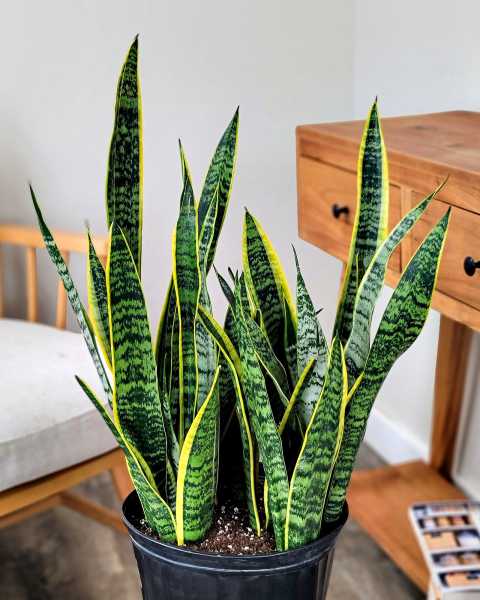
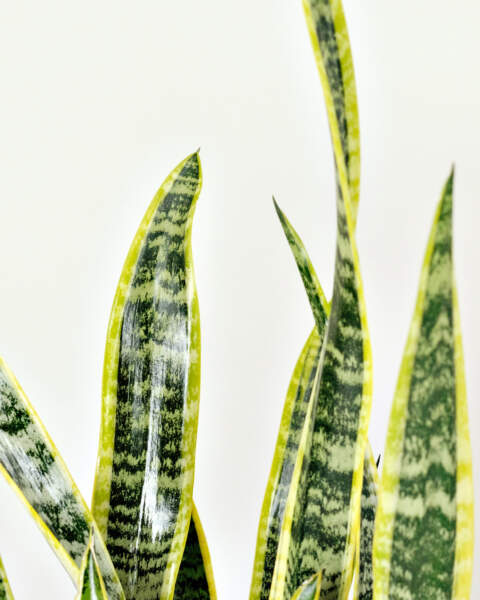
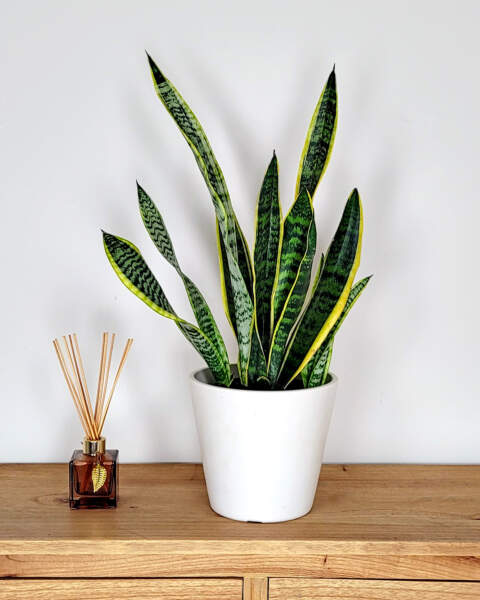
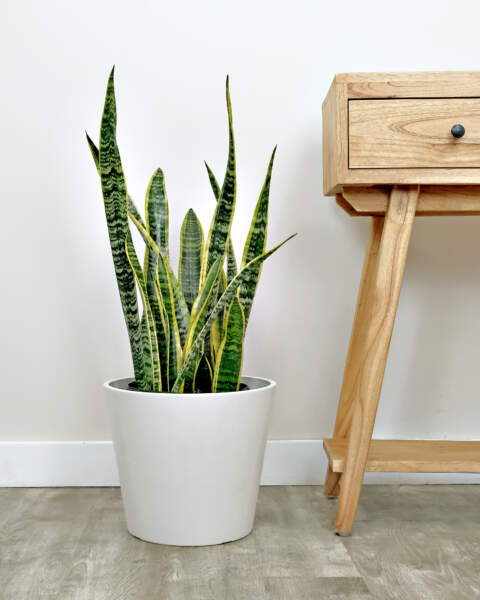







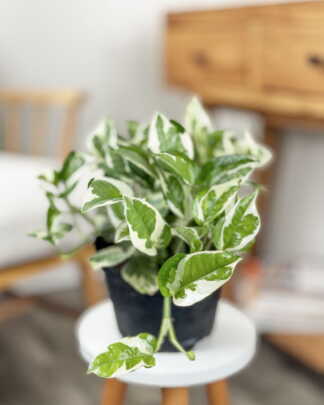
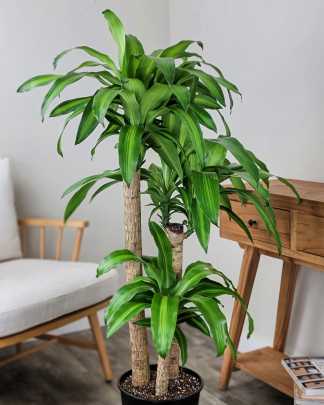
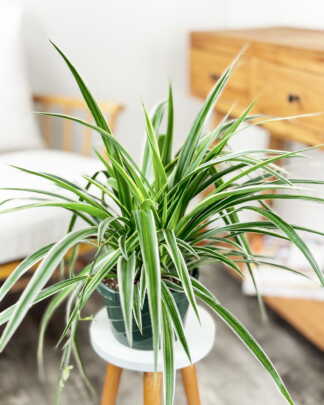
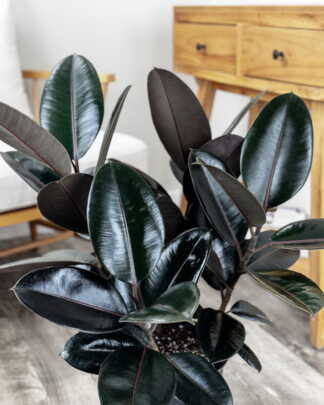



Ronald Pizmoht (verified owner) –
Kevin P. (verified owner) –
Came in good condition
Debra Robling (verified owner) –
My daughter loves the plants and will order from you herself!
Mollie W. (verified owner) –
Received a beautiful and very healthy looking plant I couldn’t find locally! Great communication throughout the ordering and shipping process. Thank you!
Anonymous (verified owner) –
Michael Kromer (verified owner) –
Anonymous (verified owner) –
I believe I ordered the medium and was very happy with the size. It’s a gorgeous plant!
Ann Rambasek (verified owner) –
Giselle H. (verified owner) –
Plant came packed very well and secured. It was larger than expected and just beautiful. I am very happy with this purchase and this company.
Michael (verified owner) –
Same feedback as my “Robusta” post, I have shopped at PlantVine before and I will likely continue due to the convenience. The plants took longer than expected for delivery this time, and the size of each plant is noticeably smaller than the first time that I ordered. That said, I repotted them and they seem happy. Also, the shipping/packaging of the plants is much improved from last time.
Deborah (verified owner) –
I have ordered plants from other sites. PlantVine has far surpassed my expectations. I received a Sansevieria trifasciata.
Debbie McKee (verified owner) –
Paralee E. (verified owner) –
Really nice Sansevieria to add to my collection. It arrived in great condition and packaged very well.
Thelma (verified owner) –
Love this plant thank plantvine 💚
Tracy D. (verified owner) –
Great deal for this lovely plant. It was larger than I expected and arrived in perfect condition.
Paula G. (verified owner) –
I have NEVER had a problem with any of the many plants I’ve ordered! They are always packaged very securely and arrive in excellent condition. PlantVine is my go-to for healthy and unique houseplants!
Jena Foster (verified owner) –
Arrived safely, she’s beautiful & already thriving!
Teresa (verified owner) –
It came taller than I thought, and I’m so happy! She is fabulous and healthy. Thank you!
Donna H. (verified owner) –
A tiny bit smaller than I thought. (Same size as the medium plant I also got.). But beautiful, healthy looking, well shipped. Thank you
Amber C. (verified owner) –
She is absolutely stunning. I could not have chosen a more beautiful plant myself.
Marie Montiero (verified owner) –
Paula (verified owner) –
This is the first time ordering from PlantVine and I can assure you it will not be my last! In fact I have been raving about the wonderful experience I had from the ease of ordering, to the communication (including pictures of the plants when they are ready to ship ) to delivery with great packaging! I have shared the PlantVine link with family and friends and suggested their next order should be with PlantVine as they will not be disappointed! So happy PlantVine!!
Angela C. (verified owner) –
The plants are always fabulous from plantvine! I completely trust this place !
Leah (verified owner) –
Packaging was incredible and plant is doing well in it’s new home
hope t. (verified owner) –
The snake plant I ordered was a present and it arrived perfectly intact and it was so beautiful and big
Michelinda Smith (verified owner) –
Plants are beautiful! Healthy, great size, and no bugs like another place I ordered from. Arrived quickly, packed perfectly. I have already gotten so many compliments and I direct folks to you!
Dianne (verified owner) –
Not as many frawns as the picture shows when I received the plant today it had half the amount. Good looking. Love where I have it in the family room on the hearth.
Paul Ramey (verified owner) –
I ordered 2 of the same sized plants and the plants I got are drastically different sizes (albeit in the same size pot). For my purposes, the end result is not great. Both plants shipped well and are healthy.
BELINDA J (verified owner) –
Arrived in great condition and very healthy.
Debra M. (verified owner) –
She is setting in quite well. I honestly was impressed with the care taken in preparing for shipping. This beauty is exactly as pictured, which I appreciate the picture sent pre-shipment. She still isn’t requiring any water, but when the time comes it will be spring water. I really love this beautiful Laurentii. Thank you 😊